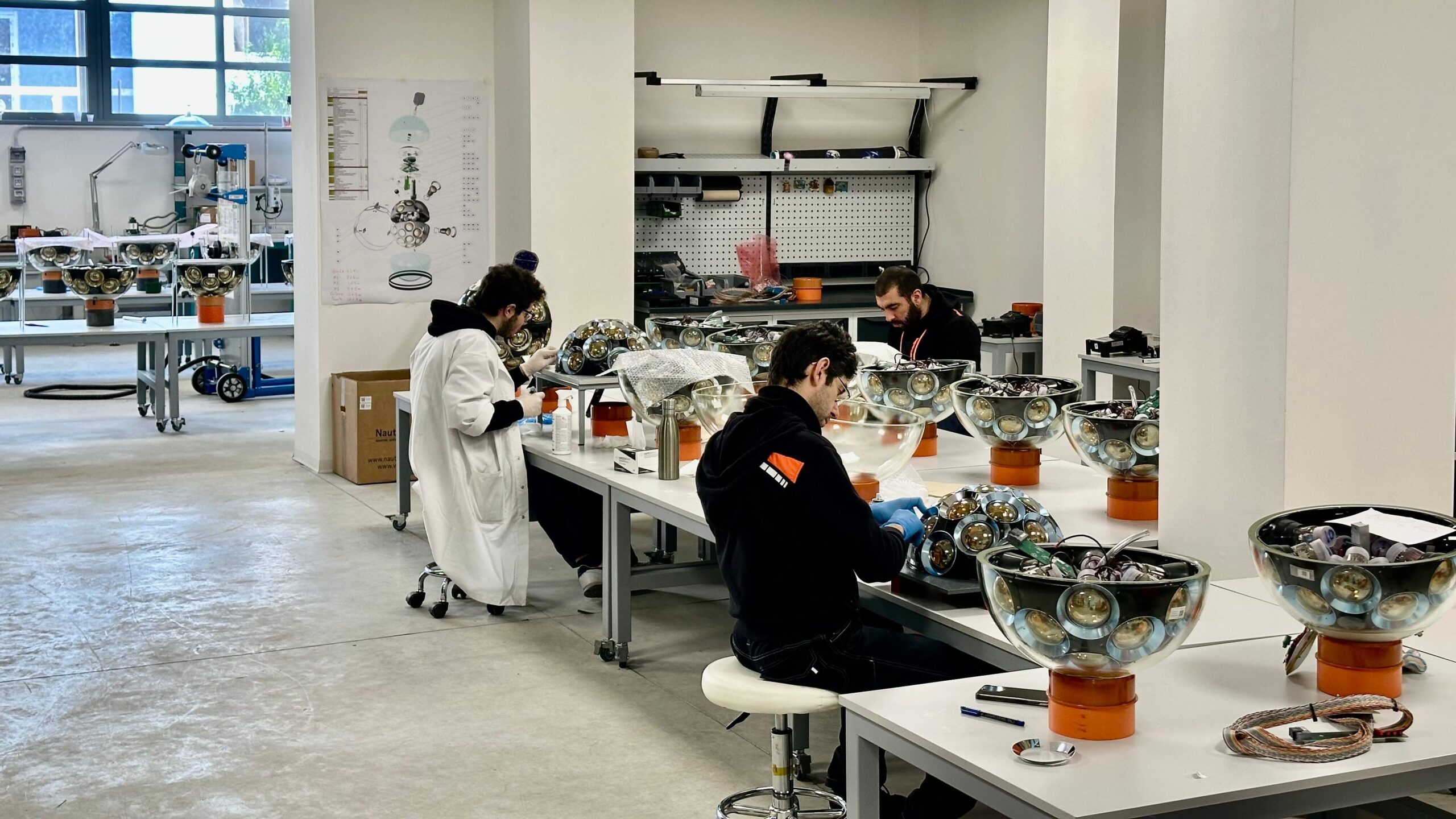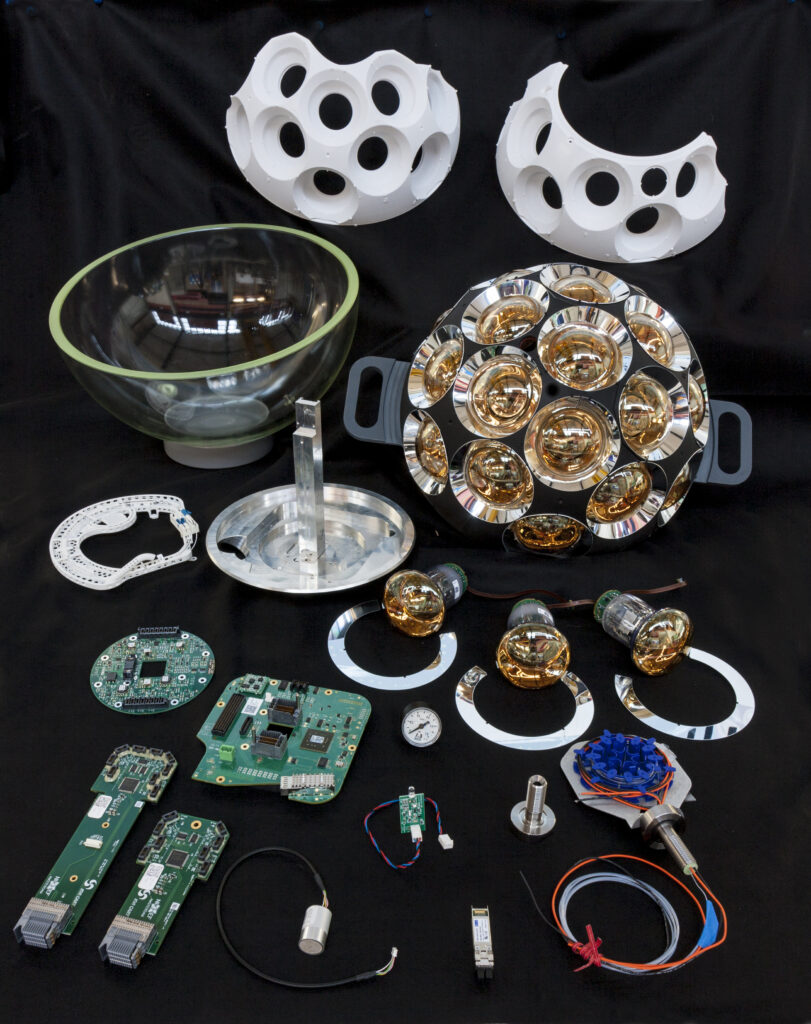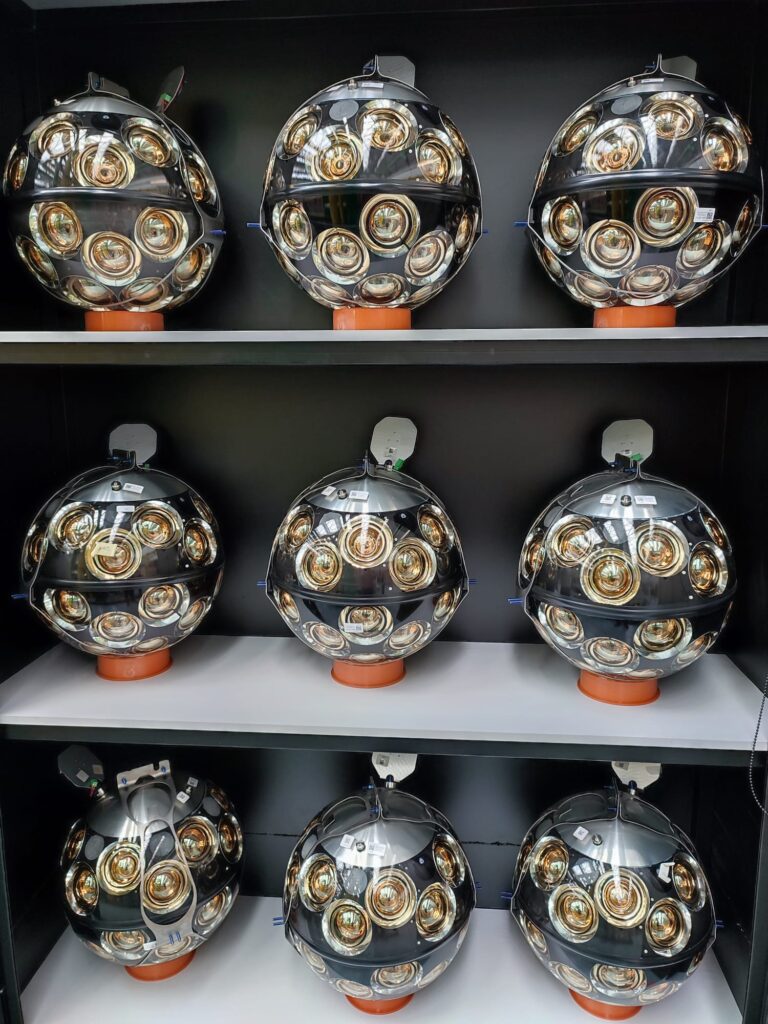Working Group
- Immacolata Carmen Rea (ISR)
- Alessandro De Giosa (LQS)
- Umberto Di Cerbo
- Domenico Rubini

The KM3NeT Collaboration has developed a multi-PMT optical solution for the construction of the two deep-sea telescopes, ARCA and ORCA. This approach offers several advantages over the traditionally used single-PMT optical modules in neutrino telescopes, including a larger photocathode area, equivalent to three 10-inch photomultipliers. Additionally, the multi-PMT design enables high resolution, precise positioning, and accurate timing calibration.
The digital optical module (DOM) of KM3NeT features an innovative design: it consists of a 17-inch diameter high-pressure-resistant glass sphere that houses 31 PMTs, calibration devices for positioning and timing, and electronics for power distribution, readout, data acquisition, and transmission. The segmented photocathode, covering approximately 1200 cm², enhances sensitivity to the incoming direction of detected photons, providing broad angular coverage and excellent photon-counting performance. Moreover, in the event of a PMT failure, the module remains functional, minimizing the impact on the overall telescope performance.
In its final configuration, KM3NeT will consist of more than 6000 DOMs. To achieve this large-scale production within a reasonable timeframe, the assembly is carried out simultaneously at eight different integration sites within the collaboration’s laboratories, including the DOM integration site of CAPACITY. This parallel workflow ensures a high production rate, exceeding 100 well-qualified modules per month.

The integration of the optical modules follows a strict protocol and a standardized procedure.
The assembly process involves filling the two glass hemispheres from the bottom up in seven sequential steps:
- Gluing a cooling mechanical structure inside the top hemisphere and attaching an acoustic piezo sensor in the bottom hemisphere.
- Installing the electronics and a penetrator, which connects the DOM to the backbone cable of the detection unit, followed by a helium leak test and optical fiber splicing.
- Mounting the PMTs and light collection rings into their support structures.
- Performing a functional test.
- Pouring a transparent two-component silicone gel to ensure optical coupling between the PMTs and the glass.
- Closing the DOM.
- Conducting the final acceptance test.

All components are registered in a central database using a Unique Product Identifier (UPI). A dedicated software, the “KM3DIA” (KM3 Detector Integration Assistant), guides the integration process by ensuring the correct sequence of operations, logging all relevant data, and recording the details of each DOM.

DOMs integrated at the CAPACITY LAB: 238
06/05/2025
